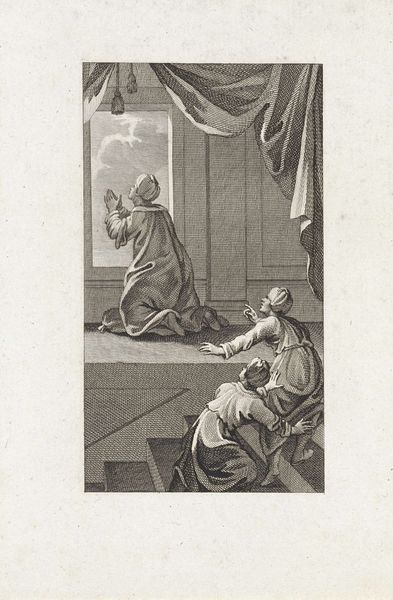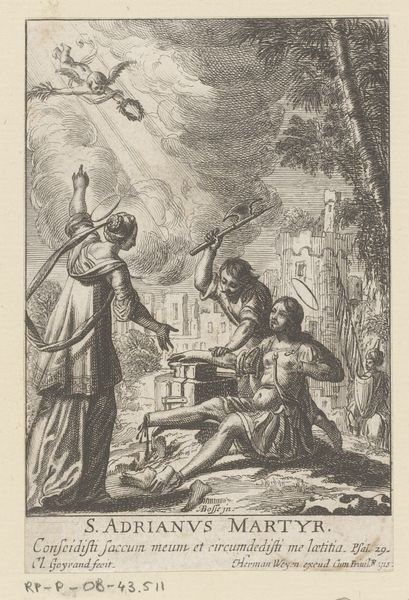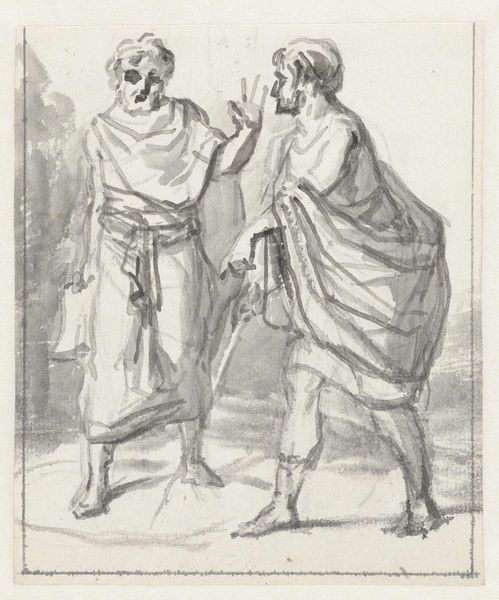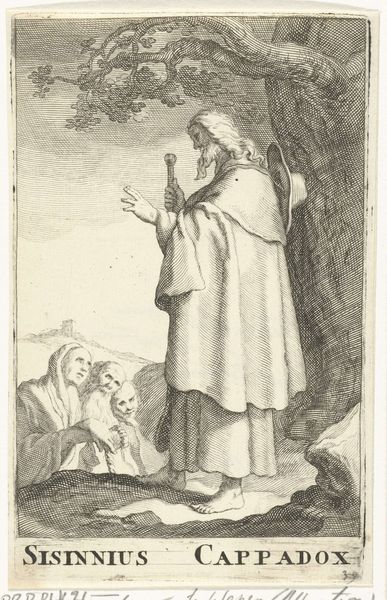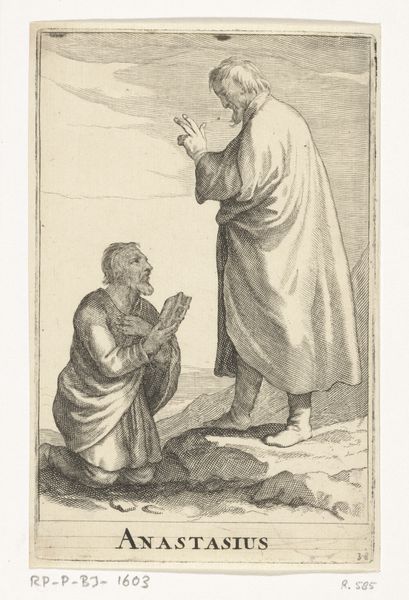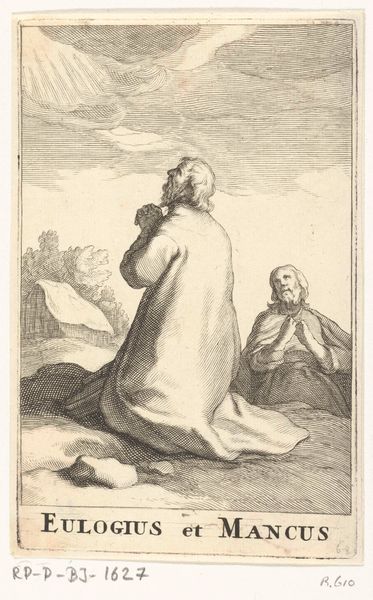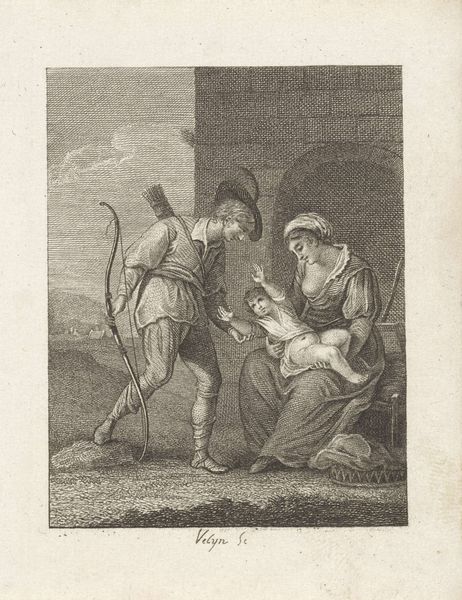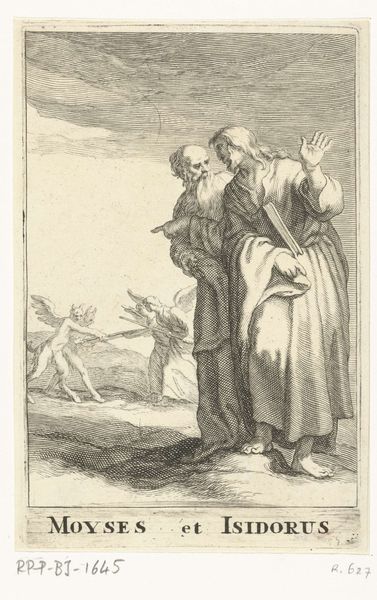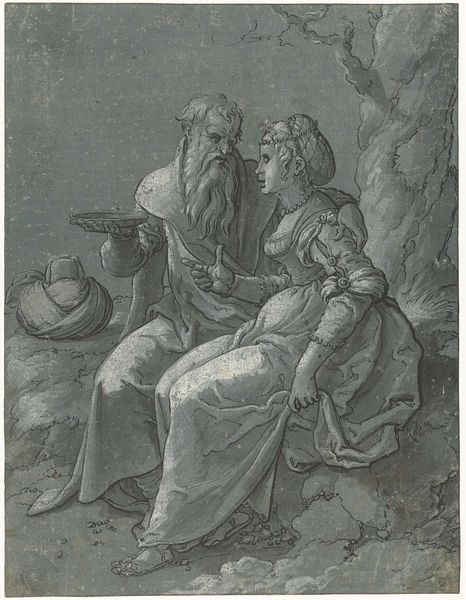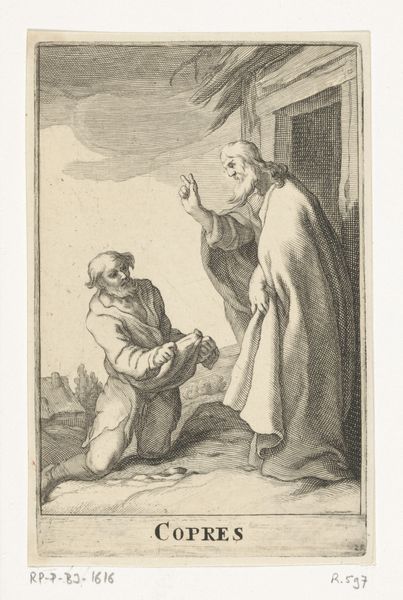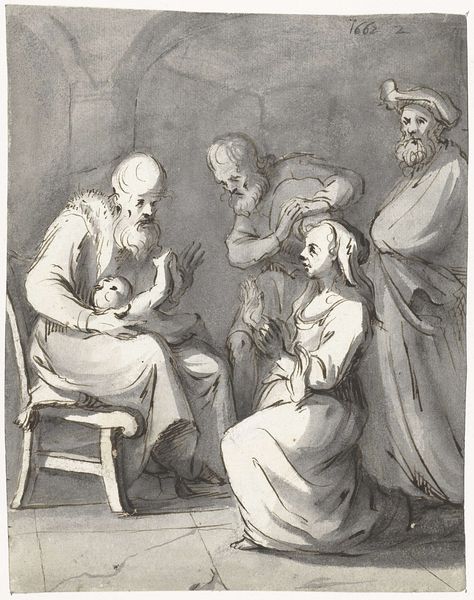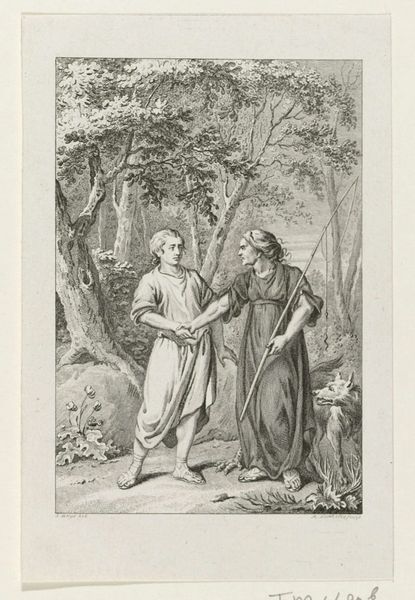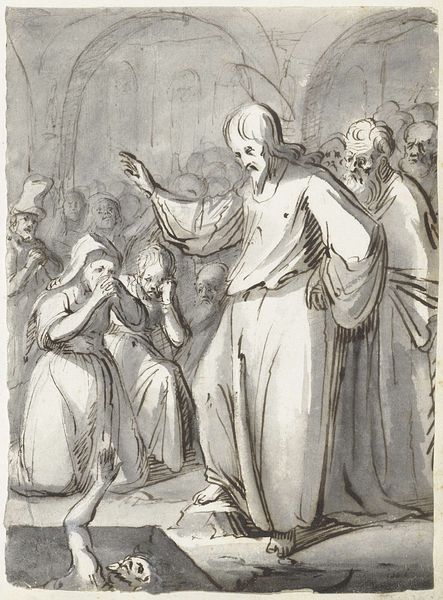
drawing, paper, ink
#
drawing
#
narrative-art
#
baroque
#
figuration
#
paper
#
ink
Dimensions: height 181 mm, width 152 mm
Copyright: Rijks Museum: Open Domain
Curator: Welcome. We're standing before Moses ter Borch’s “Christ and the Samaritan Woman at the Well," a drawing made with ink on paper around 1661-1662. Editor: This piece has a quiet drama to it. The gray washes give it an ethereal feel, almost dreamlike, yet there's a striking tension in the figures' gestures. Curator: The subject, drawn from the Gospel of John, carries a deep symbolic weight. The well, of course, has always represented life, sustenance, and even revelation. Water as transformation, and the figures presented under starkly rendered conditions—the natural barriers as both symbolic and material obstacles. Editor: Right, and the figures themselves embody those opposing forces, their interactions shaped by the norms and transgressions that underpin it all. The Samaritan woman is rendered carefully carrying the means to draw the crucial well water; consider too her place outside the assumed narrative structures of that place and time. The iconographic strength of water as rebirth, as change, is incredibly pronounced here, given that placement of a non-believer. The artist has made very conscious decisions that give way to potent meanings here. Curator: Consider too that Moses ter Borch, working within a baroque idiom, harnesses the interplay of light and shadow to accentuate the narrative. Note how the use of contrasting monochrome values defines the figures' forms, accentuating the key visual components. These simple contrasts effectively create an emotive intensity, emphasizing the pivotal nature of their encounter at the well. Editor: That formal balance echoes the thematic balance: two worlds converging around a shared resource. And as an emblem of social barriers breaking down—the water transcends both literal and metaphorical thirsts. It’s hard to separate how, in this piece, the characters are so defined by each other: each aspect heightened by this visual dialectic, their gestures reflecting internal transformations. Curator: Yes, precisely; the work masterfully captures this critical juncture, the transformative conversation between Christ and the Samaritan woman. Looking closely at how form, composition, and tonal values contribute to its symbolic depth makes this a profound example of ter Borch’s artistic skill. Editor: Looking at this work gives new insight into the power dynamics and transformations conveyed, even through the subtleties of ink on paper. An extremely insightful encounter rendered deftly.
Comments
No comments
Be the first to comment and join the conversation on the ultimate creative platform.
